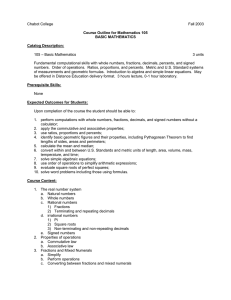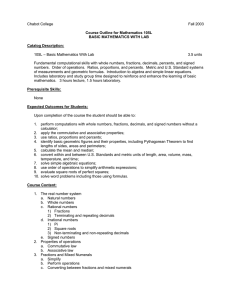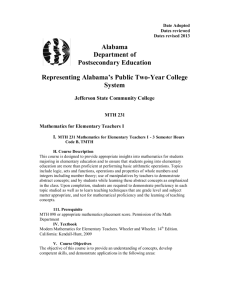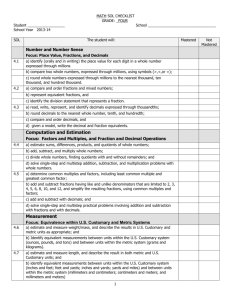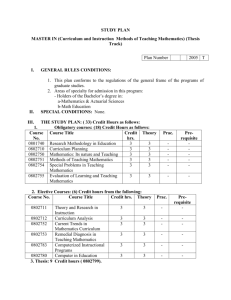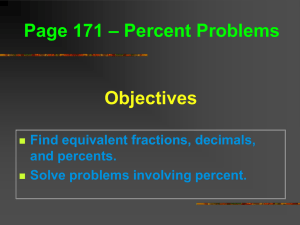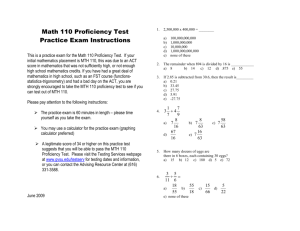Course Profile with Objective
advertisement
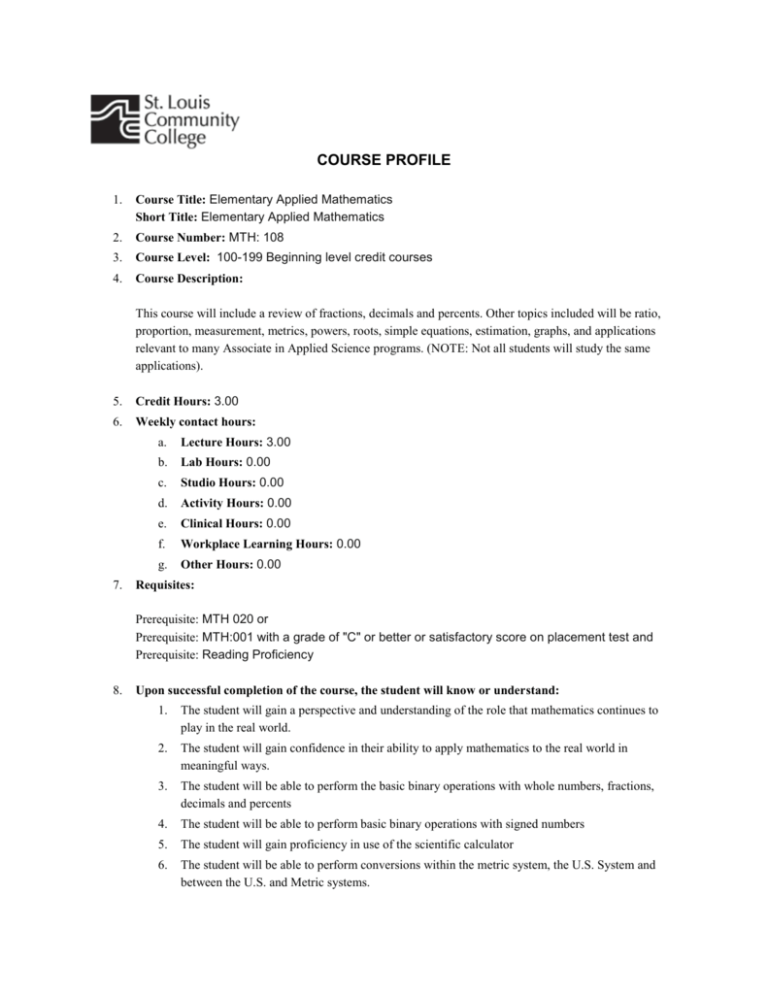
COURSE PROFILE 1. Course Title: Elementary Applied Mathematics Short Title: Elementary Applied Mathematics 2. Course Number: MTH: 108 3. Course Level: 100-199 Beginning level credit courses 4. Course Description: This course will include a review of fractions, decimals and percents. Other topics included will be ratio, proportion, measurement, metrics, powers, roots, simple equations, estimation, graphs, and applications relevant to many Associate in Applied Science programs. (NOTE: Not all students will study the same applications). 5. Credit Hours: 3.00 6. Weekly contact hours: 7. a. Lecture Hours: 3.00 b. Lab Hours: 0.00 c. Studio Hours: 0.00 d. Activity Hours: 0.00 e. Clinical Hours: 0.00 f. Workplace Learning Hours: 0.00 g. Other Hours: 0.00 Requisites: Prerequisite: MTH 020 or Prerequisite: MTH:001 with a grade of "C" or better or satisfactory score on placement test and Prerequisite: Reading Proficiency 8. Upon successful completion of the course, the student will know or understand: 1. The student will gain a perspective and understanding of the role that mathematics continues to play in the real world. 2. The student will gain confidence in their ability to apply mathematics to the real world in meaningful ways. 3. The student will be able to perform the basic binary operations with whole numbers, fractions, decimals and percents 4. The student will be able to perform basic binary operations with signed numbers 5. The student will gain proficiency in use of the scientific calculator 6. The student will be able to perform conversions within the metric system, the U.S. System and between the U.S. and Metric systems. 9. 7. The student will be familiar with basic geometric figures, geometric relationships and applications of geometry. 8. The student will gain proficiency in the use of elementary statistics, including real world applications of the mean, median, mode and standard deviation. Upon successful completion of the course, the student will demonstrate the ability to: 0. Students will be able to give examples of how mathematics is used in the real world. 1. Students will make a bona fide attempt at solving the real world applications presented to them 2. Students will perform basic binary operations on whole numbers, fractions, decimals and percents. 3. Students will perform basic binary operations on signed numbers. 4. Students will demonstrate their ability to use a scientific calculator. 5. Students will perform conversions within the Metric System, within the U.S. System and between the Metric and U.S. Systems. 6. Students will identify basic geometric shapes, related formulae, and use these in real world applications 7. Students will demonstrate the ability to calculate the mean, median, mode and standard deviation, interpret the results and use them in meaningful real world applications. 10. Minimum Requirements: . Testing: Students will complete written tests in class, including a comprehensive final exam a. Writing Requirements: Writing assignments beyond what is necessary for tests are encouraged but not required. b. Projects: suggested but not required c. Other (please specify): Homework is assigned so that the student may practice using the vocabulary, concepts, and methods discussed in class. This practice is directly related to test performance and in that sense is a course requirement
